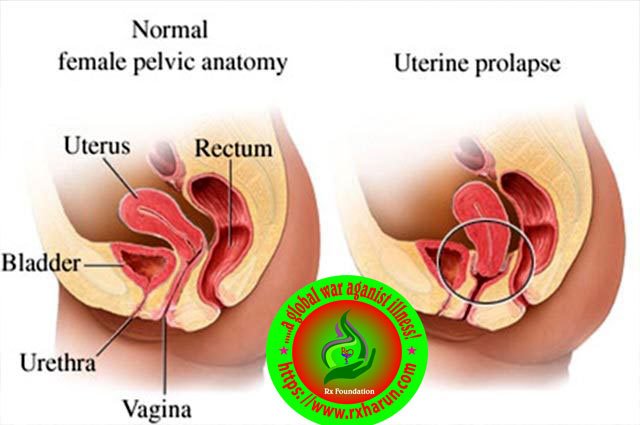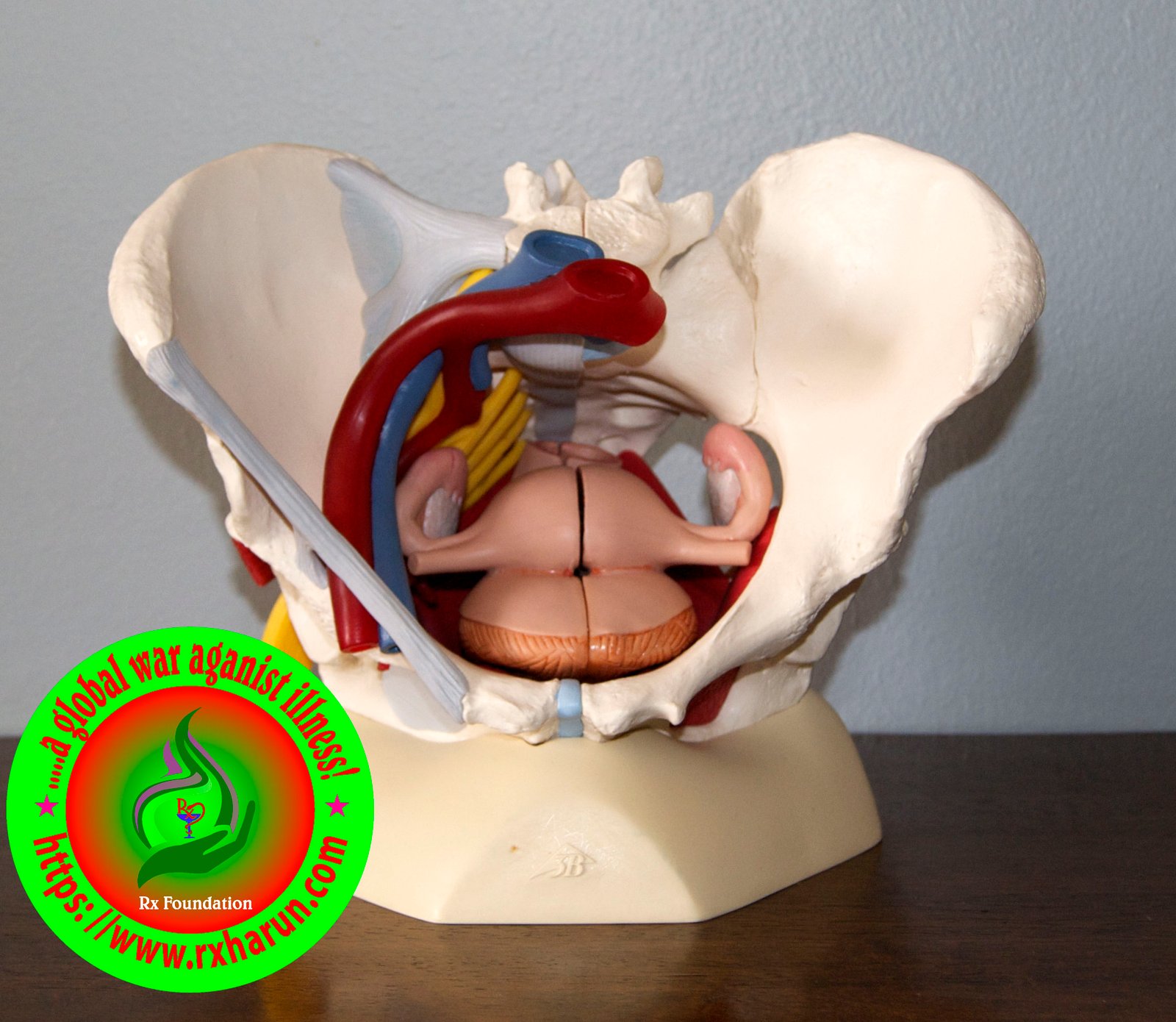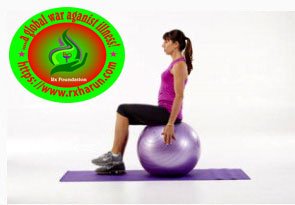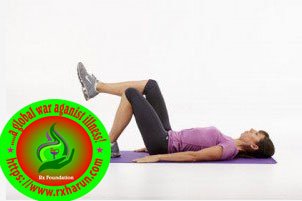What is the Best Exercise for Uterine Prolapse/ Core Strengthening Exercises is referred to a person’s ability to stabilize their core? Stability, in this context, should be considered as an ability to control the position and movement of the core. Thus, if a person has greater core stability, they have a greater level of control over the position and movement of this area of their body. The body’s core is frequently involved in aiding other movements of the body, such as the limbs, and it is considered that by improving core stability a person’s ability to perform these other movements may also be improved i.e. core stability training may help improve someone’s running ability.
What is the Best Exercise for Uterine Prolapse
Core muscles are vital for balance and stability. The core is not limited to the muscles you can see around the stomach (what we often think of as the “six-pack” region). In fact, dozens of muscle groups make up the core, including:

- Pelvic floor muscle
- Obliques (which run along the trunk)
- Rectus abdominis (the “six-pack” muscles)
- Multifidi (deep back muscles)
- Diaphragm
- Transverse abdominis (located underneath the external and internal obliques)
- Gluteus maximus (butt muscles)
All of these muscle groups work in concert to keep us balanced. Over focusing on one particular area (such as the abdominals, by doing loads of crunches) can be counterproductive and lead to injury by creating imbalanced muscles.
While the larger “global” muscles of the core create big movement patterns, the smaller, deeper core muscles connect vertebrae from one joint to another. A solid core exercise routine should work all of the muscle groups—large and small, without causing strain that can lead to pelvic organ prolapse (more on that below). Let’s look at some of these exercises.

Uterine prolapse
Uterine prolapse is when uterus slips from its normal position into the vagina or birth canal due to the weakening of pelvic floor muscles.
Common stabilization exercises for core stability
| Exercise | Description | Primary Muscles Recruited |
|---|---|---|
| Supine bridge[rx] | Supine, knees flexed ~90° with feet flat on floor; raise hips to create straight line between shoulder and knees | Gluteus maximus |
| Gluteus medius | ||
| Longissimus thoracis | ||
| Lumbar multifidus | ||
| Supine unilateral bridge[rx] | Perform supine bridge; lift 1 leg into full knee extension | External oblique |
| Gluteus maximus | ||
| Gluteus medius | ||
| Hamstrings | ||
| Longissimus thoracis | ||
| Lumbar multifidus | ||
| Side bridge[rx] | Side-lying with the upper body supported on the forearm with elbow flexed to 90°; lift trunk to create a straight line between shoulders and feet | External oblique |
| Gluteus medius | ||
| Longissimus thoracis | ||
| Lumbar multifidus | ||
| Rectus abdominus | ||
| Plank[rx] | Prone on elbows; lift trunk to create straight line between shoulders and feet | External oblique |
| Gluteus medius | ||
| Rectus abdominus | ||
| Bird dog[rx],[rx] | Quadruped with neutral spine alignment; can perform unilateral arm/leg raises, progressing to simultaneous contralateral arm/leg raises | External oblique |
| Gluteus maximus | ||
| Gluteus medius | ||
| Hamstrings | ||
| Longissimus thoracis | ||
| Lumbar multifidus |
Symptoms
Women who have a minor uterine prolapse may not have any symptoms. Moderate to severe prolapse may cause symptoms, such as:
- Pressure, pain, bulging or fullness in vagina, rectum, or both.
- Feeling like your “insides are falling out” or like you are sitting on a ball.
- Urinary incontinence.
- Vaginal bleeding
- Increased discharge
- Problems with sexual intercours
- Seeing the uterus or cervix coming out of the vagina
- A pulling or heavy feeling in the pelvis
- Constipation
- Recurrent bladder infections
- Urine retention (you have to pee, you just can’t get it to come out).
- Fecal incontinence.
- Back/abdominal pain.
- Lack of sexual sensation.
- Painful intercourse.
- Can’t keep a tampon in.

Physical Therapy
Abdominal core exercises help to strengthen the core muscles and protect the uterine prolapse from further worsening. These 5 core exercises are pelvic floor safe alternatives to some of the more intense abdominal core muscles.
Exercise 1: Seated ball knee lifts
Sit tall on the gym ball and contract the abdominal muscles, hold onto the side of the balls with fingertips.
Slowly raise the left knee to lift your right foot just off the ground, and keep your abdominal muscles gently activated.
Lower the foot back to ground, relaxing the abdominal muscle back to rest.
Repeat it for ten times and then start with alternate leg.

Exercise 2: Women push up.
kneel on all fours, place hands directly below the shoulders and position the knee directly under hips.
Gently activate lower abdominal muscles and maintain normal spine curve throughout, bend your elbows to lower your nose down towards the ground between your hand.
Breathe out as you raise straighten your elbows and return to starting position.

Exercise 3: Alternate arms and leg raise
Kneel all fours and place your hand beneath your shoulder, position your knees beneath your hips, then gently engage your deep abdominal muscles and maintain this contraction throughout.
Extend your left leg behind your body and raise left foot off the ground. Left heel should be no higher than your left buttock.
Reach your right arm in front of your body no higher than shoulder height. for stability and control holding this position for up to 10 seconds at a time. Repeat on alternate sides.

Exercise 4: Bent knee fall outs
Start lying on your back with knees bent and feet flat, keep the normal inward curve in your lower back throughout, gently activate your deep abdominal core muscles.
Imagine balancing a glass of water on your right knee which should not move.
Maintain your abdominal contraction as you lower your left knee sideways, just until your pelvis starts to roll to the left. As soon as your Pelvis start to move lift your leg back to starting positions.

Exercise 5: Single leg raise
Start lying down your back with knees bent and your feet flat on the ground, Keep the normal inward curve in your lower back throughout.
Gently activate your deep abdominal core muscles, keep your abdominal muscles gently contracted as you raise your bent knee off the ground
When you feel the lower back start to flatten, lower your knee back to starting position.

List of exercises performed under core stabilization and routine physical therapy exercise.
| Core Stabilization Exercises | Routine Physical Therapy Exercises |
|---|---|
| 1.Pressure feedback core exercise in supine & prone | 1.Hamstring stretching |
| 2.Multifidus exercise | 2.Calf stretching |
| 3.Frontal & Side Plank exercise | 3.Hip flexors stretching |
| 4.Pelvic floor exercises | 4.Back extensors stretching |
| 5.Wobble board oblique twist | 5.Abdominal curl-up exercise in supine |
| 6.Thera-band reverse wood chop exercise | 6.Back extensors exercise in prone |
| 7.Windshield wiper exercises | 7.Hip extensors exercises in prone |
| 8.Diaphragmatic strengthening exercises | |
| 9.Single leg standing on foam |
THINGS TO CONSIDER?
- Painful intercourse.
- Lighten your weights or resistance so that you don’t feel pressure down on your pelvic floor as you move – no heavy lifting with a Valsalva maneuver
- Avoid holding your breath by exhaling with effort (e.g. when you pull, push, lift or lower weights) using your ‘core’ breath (see Pelvic Floor exercises)
- Maintain good posture
- Reduce the depth of your squats and lunges – aim to keep your hips at a higher level than your knees
- Avoid all abdominal exercises (e.g. sit-ups, curl-ups, crunches, double leg lifts, and some Pilates moves) and instead chose abdominal exercises that resist lateral and frontal flexion (eg. Pallof press, side planks)
- Choose supported positions (eg seated machines or sitting on a fit ball to use hand weights)
- Keep your legs closer together during exercise, no wide legged squats or squat jumps
- Lift your pelvic floor before you move and relax afterward. Notice how many reps that you can do before your pelvic floor muscles tire
- You may need to add some rests or reduce the number of reps that you do in a row, while your pelvic floor muscle fitness improves
References
[bg_collapse view=”button-orange” color=”#4a4949″ expand_text=”Show More” collapse_text=”Show Less” ]
- https://www.ncbi.nlm.nih.gov/pmc/articles/PMC3806175/
- https://www.ncbi.nlm.nih.gov/pmc/articles/PMC3806181/
- https://www.ncbi.nlm.nih.gov/pmc/articles/PMC6110226/
- https://www.ncbi.nlm.nih.gov/pmc/articles/PMC4395677/
- https://www.ncbi.nlm.nih.gov/pmc/articles/PMC5648929/
- https://www.ncbi.nlm.nih.gov/pmc/articles/PMC3806182/
- https://www.ncbi.nlm.nih.gov/pmc/articles/PMC3524111/
- https://www.ncbi.nlm.nih.gov/pmc/articles/PMC5293521/
[/bg_collapse]
